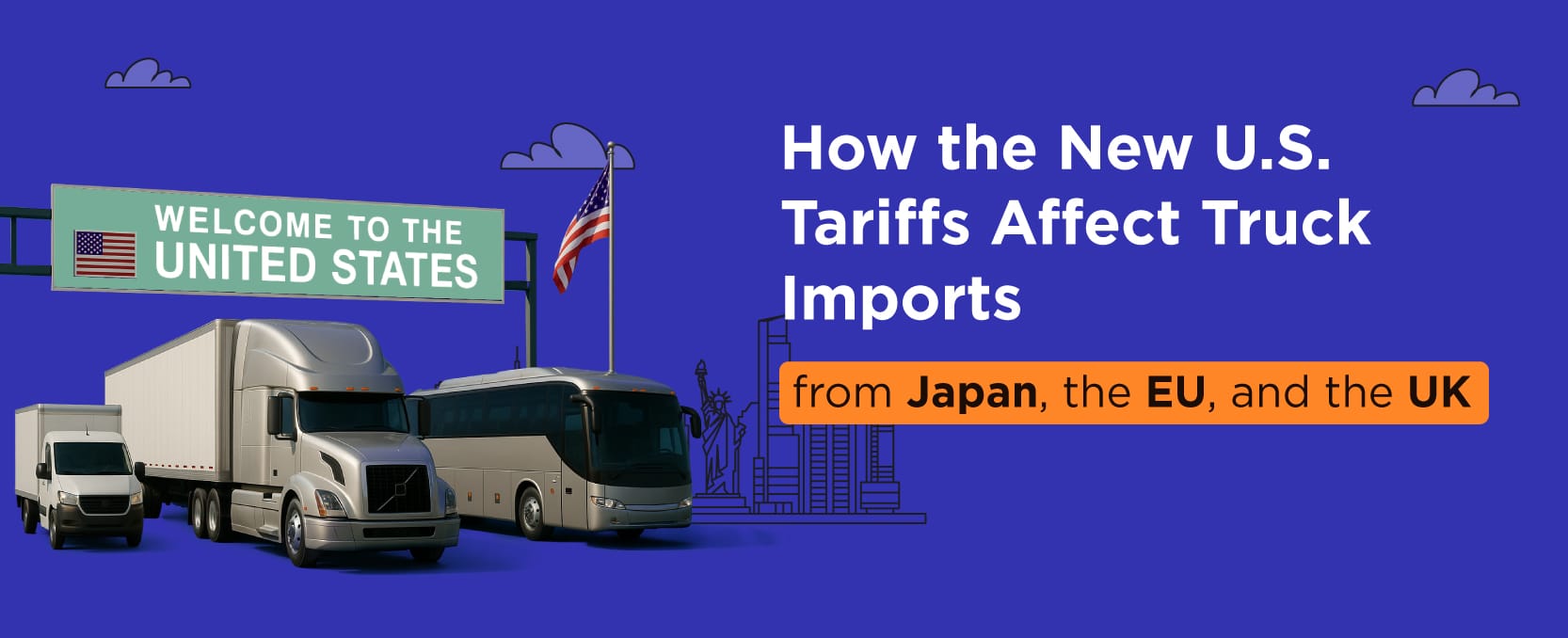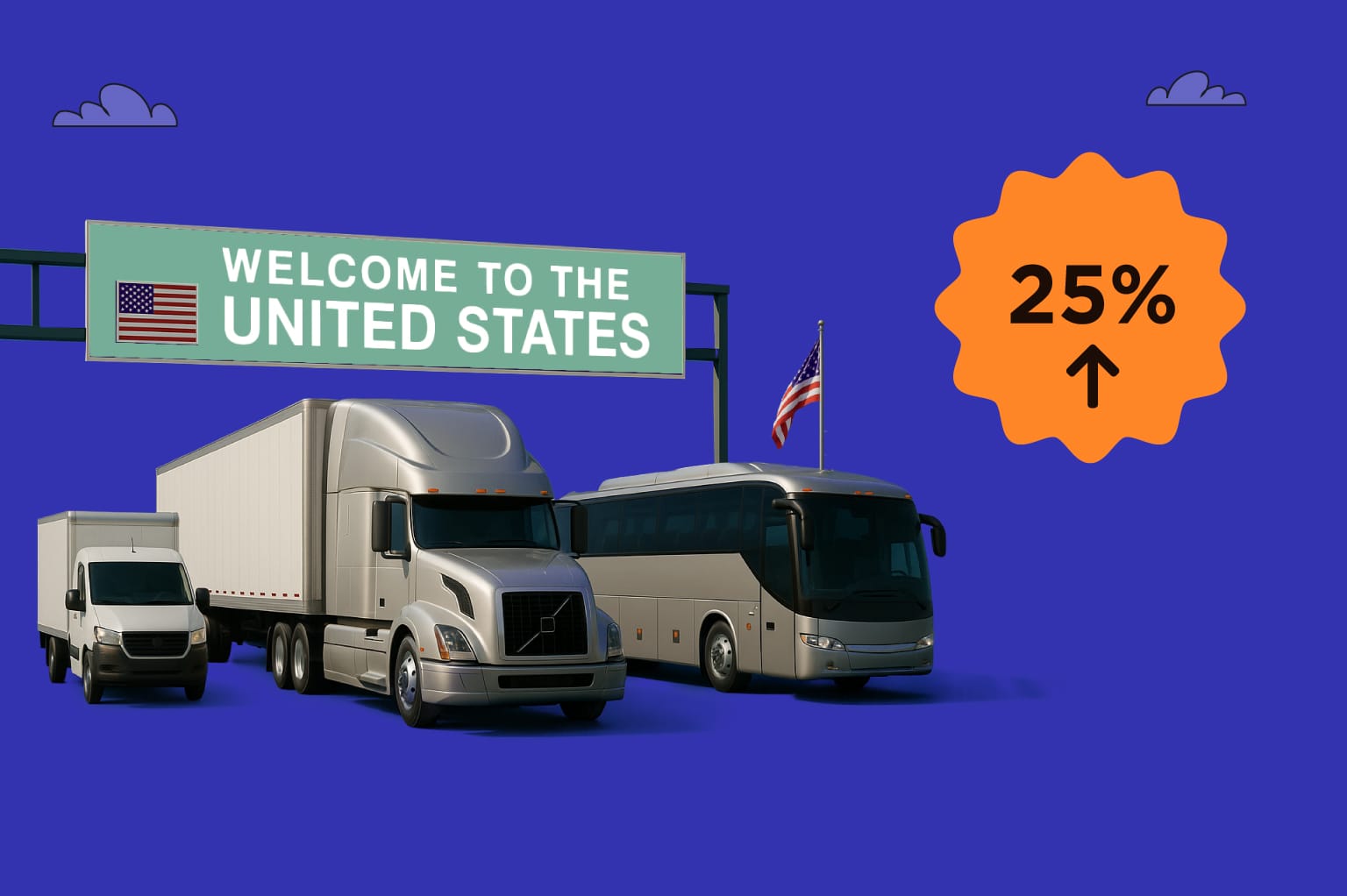
New tariffs just shook the global truck market. The U.S. now imposes 10–25% duties on medium- and heavy-duty trucks and parts from Japan, the EU, and the UK.
These Section 232 tariffs, announced under Proclamation 10984, aim to strengthen domestic manufacturing—but they’re already raising costs for importers.
From complex HTSUS filing codes to new CBP compliance steps, the latest rules are changing how businesses buy, ship, and price commercial vehicles.
Let’s break down what’s new, what each region faces, and what importers should do right now to stay compliant—and competitive—in this shifting trade landscape.
What’s Changing Under Proclamation 10984
In October 2025, the White House issued Presidential Proclamation 10984, reshaping how the United States handles imports of medium- and heavy-duty trucks (MHDVs), buses, and truck components.
Acting under Section 232 of the Trade Expansion Act of 1962, the administration introduced new tariffs intended to strengthen domestic vehicle production and reduce reliance on foreign suppliers.
Effective November 1, 2025, the proclamation imposes additional duties ranging from 10% to 25% on commercial vehicles and related parts imported into the U.S.
These changes were formally detailed in CBP’s guidance (CSMS #66665333), which also outlines new filing and classification requirements for importers and brokers.
Beyond the higher duty rates, Proclamation 10984 brings country-specific HTSUS codes, special provisions for USMCA-origin vehicles, and updated entry filing procedures in ACE (Automated Commercial Environment).
In short, for anyone importing or clearing heavy-duty vehicles or parts, the rules of the game have changed, affecting costs, compliance steps, and supply chain strategies across the board.

Why These Tariffs Were Introduced
The 2025 truck tariffs weren’t a sudden move, they were years in the making. Behind Proclamation 10984 lies a broader effort by the U.S. government to protect domestic manufacturing and reduce strategic dependence on foreign suppliers, particularly in sectors tied to infrastructure, defense, and logistics.
Heavy-duty trucks and buses play a vital role in the U.S. economy — moving freight, powering construction, and supporting emergency services.
Yet, a significant share of these vehicles and their key components, such as engines and transmissions, come from foreign manufacturers, mainly in Japan, the European Union, and the United Kingdom.
The administration’s national security review under Section 232 concluded that this reliance on imported vehicles and parts posed a potential vulnerability. In response, the new tariffs aim to:
- Encourage local production and investment in U.S. truck and bus manufacturing,
- Level the playing field for domestic producers facing cheaper imports, and
- Strengthen supply chain resilience in critical transportation sectors.
While the policy is framed as a move to boost American industry, importers and fleet operators are now grappling with higher costs, new compliance rules, and uncertainty about how long these tariffs will stay in place.
Why Japan, the EU, and the UK Are in Focus
When it comes to heavy-duty trucks and commercial vehicle parts, Japan, the European Union, and the United Kingdom aren’t just trading partners — they’re powerhouses.
Together, they account for a major share of U.S. imports in the trucking sector, supplying everything from complete vehicles to advanced drivetrains, power systems, and precision components.
In 2024, these three regions shipped billions of dollars’ worth of trucks and parts into the U.S. market, serving American fleets, distributors, and manufacturers that depend on their technology and reliability.
That dominance made them natural targets under the new Section 232 review, which sought to identify foreign sources contributing most heavily to U.S. import dependence.
Each region also represents a different trade relationship:
- Japan has long-standing automotive ties with the U.S. but no formal free trade agreement.
- The European Union is both a competitor and an ally, with ongoing trade negotiations often touching the auto sector.
- The United Kingdom, post-Brexit, maintains its own trade framework and tariff commitments with Washington.
By focusing on these three regions, the U.S. aims to rebalance the flow of commercial vehicle imports while encouraging more domestic and North American production under USMCA.
But the impact won’t be uniform — each region faces its own tariff rates, filing codes, and strategic challenges, which we’ll break down next.
Break Down of Tariff Japan, European Union, and United Kingdom
The new Section 232 tariffs introduced under Proclamation 10984 don’t apply evenly. Instead, they create different duty structures for each region — reflecting their distinct trade ties and historical duty rates.
Here’s how the changes break down:
Japan: Tiered Duties Based on Existing Rates
Japan faces a two-tier system under the new rules.
- HTSUS 9903.94.54 applies to goods with an existing Column 1 duty rate of 15% or higher, which will remain at 0% additional duty.
- HTSUS 9903.94.55 applies to goods with a Column 1 rate below 15%, and these will now face a combined 15% duty rate (regular tariff + Section 232).
In practice, this means most Japanese truck parts and assemblies will see higher landed costs, especially for vehicles and components that previously entered duty-free.
Importers of brands like Hino, Isuzu, and Mitsubishi Fuso are expected to feel the squeeze first, with costs likely passed down through distributors and fleets.
European Union: Similar Two-Tier Duty Structure
For EU member countries, the tariff framework mirrors Japan’s system:
- HTSUS 9903.94.44 → 0% additional duty (if the Column 1 rate is ≥15%).
- HTSUS 9903.94.45 → 15% total combined duty (if the Column 1 rate is <15%).
Because European trucks, such as Mercedes-Benz, MAN, Scania, and Volvo — often fall into categories with lower base tariffs, many of them will now face the 15% combined rate. The result: higher import costs and potential pricing pressure for EU manufacturers competing in the U.S. heavy-duty market.
United Kingdom: A Flat 10% Combined Rate
Post-Brexit, the UK is treated separately from the EU under its own heading:
- HTSUS 9903.94.33 applies a 10% combined tariff on qualifying vehicle parts imported from the UK.
This rate is lower than Japan’s or the EU’s but still marks a meaningful shift for British-made trucks and components, such as those from DAF or Leyland Trucks.
The new duty applies primarily to parts certified for use in U.S. automobile production or repair, as outlined in CBP’s latest guidance (CSMS #66665333).
In short, while Japan and the EU face more complex, tiered tariff systems, the UK now operates under a simpler but still impactful flat rate.
Together, these adjustments will reshape sourcing decisions, supply chain routes, and pricing strategies across the heavy-duty vehicle industry.
Filing and Compliance: What Importers Should Know
Filing entries under the new Section 232 tariffs isn’t just about paying more duty — it’s about filing correctly.
CBP now requires importers to report specific Chapter 99 HTSUS codes alongside their regular tariff classifications, ensuring duties are calculated and reported under the right headings.
For most companies, this process can be confusing. Each region — Japan, the EU, and the UK — has its own HTSUS codes, filing logic, and certification requirements within ACE (Automated Commercial Environment). One small misstep can trigger delays, penalties, or shipment holds.
That’s why partnering with an experienced freight forwarder is essential. The right forwarder understands CBP filing procedures, monitors every CSMS update, and ensures each entry meets the latest Proclamation 10984 requirements. They act as your compliance guide — helping you move cargo faster, avoid costly re-filings, and stay on the right side of customs regulations.
Simply put, a skilled freight forwarder doesn’t just move your trucks and parts — they protect your business from compliance risks.

What Does This Means for Importers Going Forward?
The new U.S. tariffs on medium- and heavy-duty trucks are reshaping global trade dynamics. Importers from Japan, the EU, and the UK now face higher costs, tighter timelines, and more complex filing requirements under Section 232.
While these changes aim to strengthen U.S. manufacturing, they also raise the bar for compliance and strategy.
Staying ahead means understanding every update, filing accurately, and planning smarter logistics.
For many businesses, that’s where the right trade and logistics partner makes all the difference — helping you stay compliant, minimize costs, and keep your supply chain moving smoothly through every policy shift.